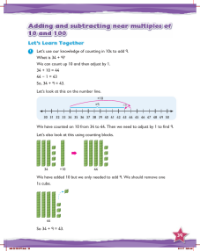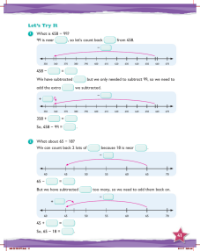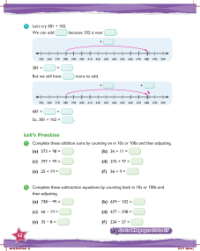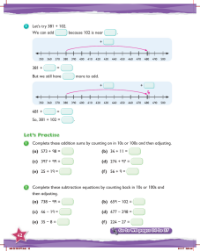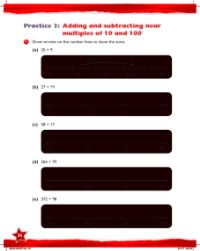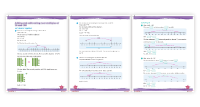Max Maths, Year 5, Learn together, Adding and subtracting near multiples of 10 and 100 (2)
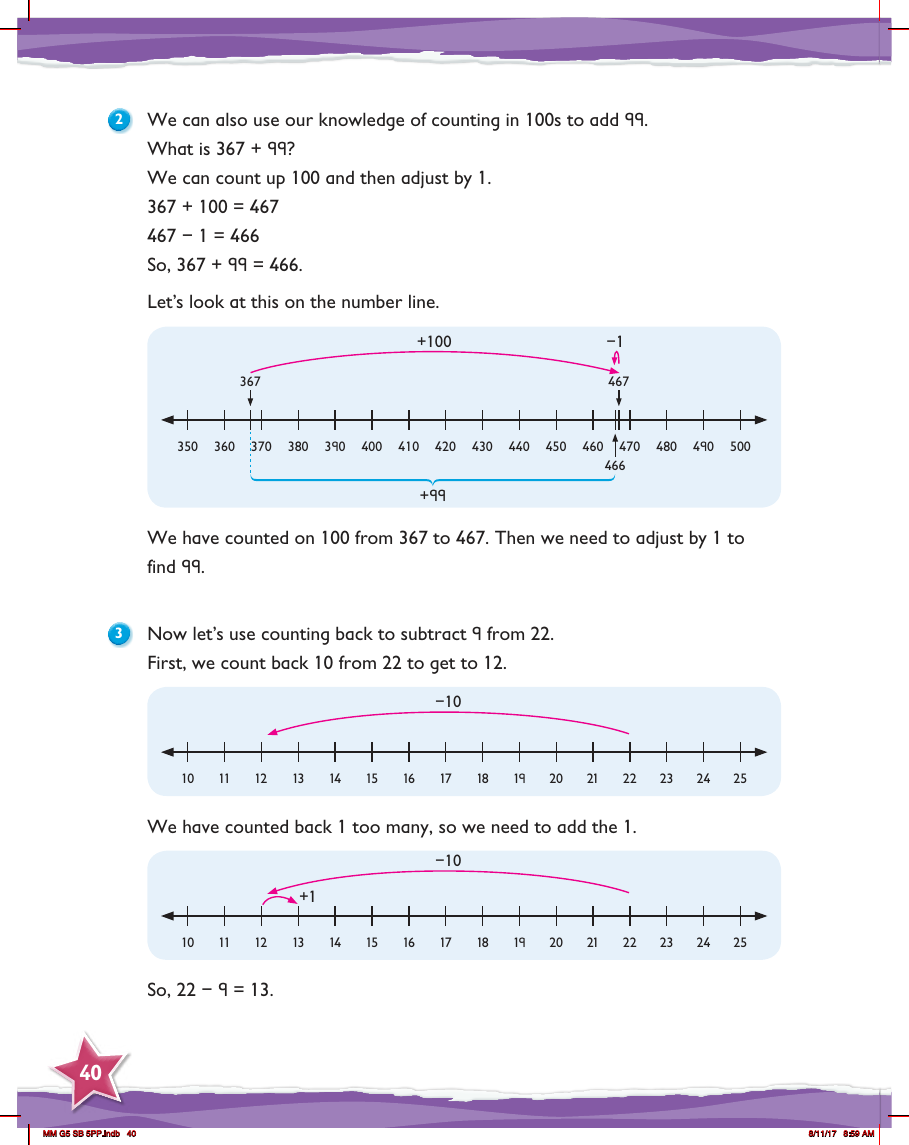
Maths Resource Description
In the Max Maths curriculum for Year 5, students learn a clever strategy for adding and subtracting numbers close to multiples of 10 and 100. One example provided is adding 99 to a number, such as 367. The method involves a two-step process: first, adding 100 to the number to make the calculation simpler, and then subtracting 1 to adjust for the difference between 100 and 99. For instance, when adding 99 to 367, students learn to first add 100 to get 467, and then subtract 1 to find the correct total of 466. This technique is visualised using a number line, which helps students see the jump from 367 to 467 with an addition of 100, followed by a small step back of 1 to reach the final answer of 466.
The same principle is applied when subtracting a number close to 10, such as subtracting 9 from 22. Students are taught to initially subtract 10 from 22, which is an easier calculation, resulting in 12. However, since 10 is 1 more than 9, they then add 1 back to correct the overstep. This method simplifies the process and helps students to quickly find that 22 minus 9 equals 13. A number line is again employed to visually support the learning process, showing the subtraction of 10 followed by the addition of 1 to reach the correct answer. These techniques encourage mental arithmetic and build confidence in handling numbers that are near these common multiples.
